Ask a question, get an answer ASAP!
☰
×
GET A QUOTE
| Save Big on Auto Repairs | Get a Quote |
If you live in areas with changing weather patterns, you may need to change the tires on your car along with the changing seasons. While tedious at best, replacing tires can also get expensive, especially as the tires you own wear down or become damaged.
Fortunately, you can place all season tires on your car so that you can drive year round in all types of weather and driving conditions without having to change the tires on your vehicle for each season.
Use this article to understand more about all season tires and see if they are suitable for your vehicle and driving needs.
When comparing the different types of tires, you have three basic models to choose from: summer, winter, and all season and within each type, you have different brands. Each tire is geared specifically to a certain weather type: summer tires for dry weather, winter tires for slippery conditions, and all season tires for both wet and dry conditions.
Type 1: Summer tires. Summer tires give your tires the grip they need when road surfaces are wet or dry.
Designed to shunt water away from the tread during wet conditions and help prevent hydroplaning, summer tires work best in the wet conditions of late spring and the hot and dry days of summer through early fall.
When buying summer tires, you have a choice of a few sub-types, including:
Type 2: Winter tires. Winter, or snow tires, provide great traction and stability when driving on ice, snow, or other inclement weather-created conditions during the cold winter months.
Some of the options available in winter tires include:
Type 3: All Season Tires. The most commonly factory-installed tire, all season tires give traction in both wet and dry conditions, as well as in lighter winter weather.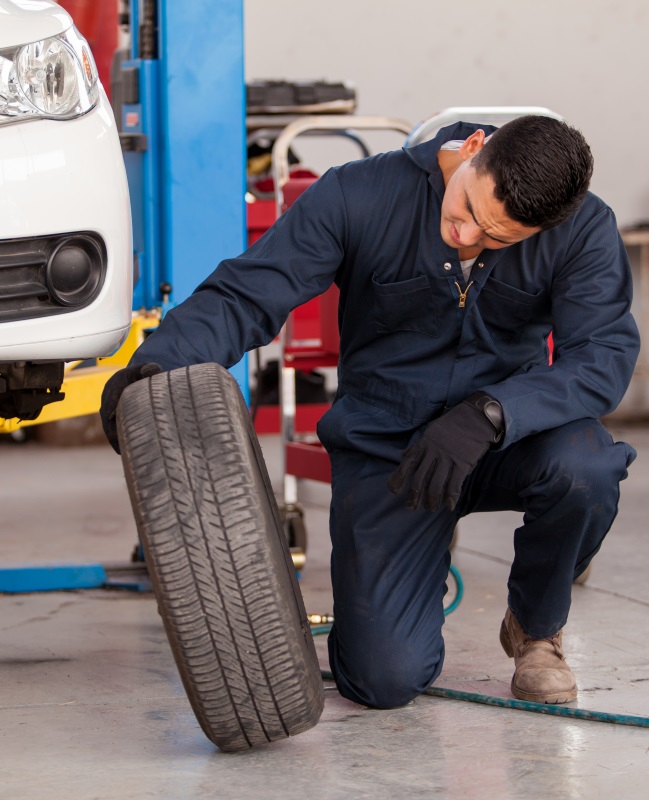
The different types of all season tires include:
All season tires have both advantages and disadvantages when it comes to handling and performance. For the most part, all season tires work best in areas that experience milder weather. While they perform better in warm or wet weather, they lose some of their handling capabilities in sandy or extreme winter conditions, which are areas where summer and winter tires excel.
Step 1: Advantages of all season tires. All season tires have many great advantages over summer or winter tires.
They provide better performance and handling in wet conditions, as well as when encountering light snow. Depending on where you live, you can leave all season tires on your vehicle year round, saving you the expense of having to keep a set of winter tires handy.
All season tires act as a midpoint between summer and winter tires. The deeper grooves of an all season tire gives it better grip in deep water. The added durability of these tires also make them a better option over summer tires in most conditions. The only time a summer tire might make a better choice is in areas with mainly warm, dry weather with little rain.
The added durability of these tires also make them a better option over summer tires in most conditions. The only time a summer tire might make a better choice is in areas with mainly warm, dry weather with little rain.
Step 2: Disadvantages of all season tires. While an all season tire is great during most driving conditions, they do have some drawbacks.
The main drawback is that during extremely cold temperatures, the compound with which all season tires are made becomes harder and reduces the traction provided.
In addition, all season tires are designed to deal with rain, but not to handle snowy conditions. One of the main problems in driving with all season tires in snow, slush, or ice is that the treads seem to fill with snow and ice, leading to decreased traction. In such cases, a winter or snow tire would serve the purpose better. Where winter tires win out over all season tires is in areas that see significant rainfall, colder temperatures, and a need for tires that grip better in such conditions.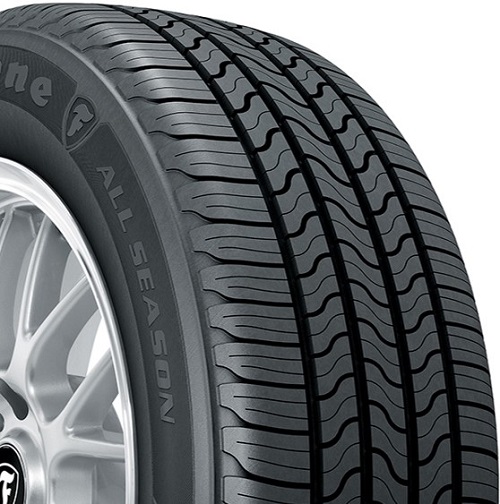 This is especially true in areas where drivers can expect to encounter differences in elevation while driving, such as in mountainous areas that experience inclement weather during the winter season.
This is especially true in areas where drivers can expect to encounter differences in elevation while driving, such as in mountainous areas that experience inclement weather during the winter season.
When searching for an all season tire, keep a few factors in mind, including tire size, safety rating, price, and other factors. Once you have an idea of what you want, you can shop for all season tires for your vehicle.
Step 1: Determine tire size. The first consideration when buying a set of tires is the size of tire you need.
Depending on your vehicle, your vehicle's tire size can vary. Smaller compact cars require a much smaller tire than a larger SUV or pickup truck.
Also ensure that you consider the width of the tire you need.
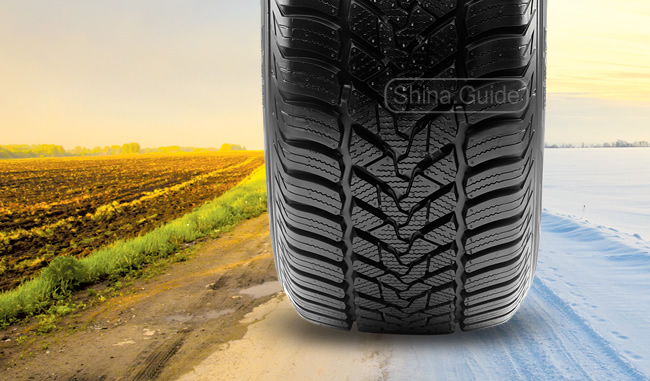
Step 2: Consider tire safety. Tire safety is another area of concern when purchasing a set of all season tires.
To find tire safety ratings, visit sites such as safecar.gov and TireRack.com, to check the safety ratings for a wide selection of tire brands.
You can also visit review sites, such as Tire-Reviews-Online.com, to find reviews according to tire brands or popular tire retailers.
Step 3: Check the tire price. Decide how much you want to spend on all season tires.
Keep in mind that the higher the speed and performance rating of a tire, the more you can expect to spend on it.
The added durability of all season tires also means that they usually are more expensive than standard summer tires.
Step 4: Other tire factors. While tire size, safety and cost play the most important part in choosing an all season tire, you should keep some other factors in mind as well.
Remember to look out for the following important factors while shopping for an all season tire:
Traction ratings: These rate the tire's ability to grip the road's surface. The traction ratings are A, AA, B, or C, with A or AA being the best rating.
The traction ratings are A, AA, B, or C, with A or AA being the best rating.
Tread patterns: Look for treads that are open with a narrower tread for good traction and the ability to move water away from the tire surface in wet conditions.
Mileage: When shopping for tires, look for those with a guaranteed high mileage.
Most car manufacturers recommend that you replace your tires six years after their production date, regardless of the condition of your tread. If you are lucky, you can keep a set of tires on your vehicle up to 10 years, though you should examine the tread regularly to make sure it is not worn or damaged.
Once you know the type, size, and other criteria that you want in an all season tire, it is time to buy them. You can find all season tires through a variety of sources, including at local retail stores or online through a variety of websites.
Option 1: Shop online.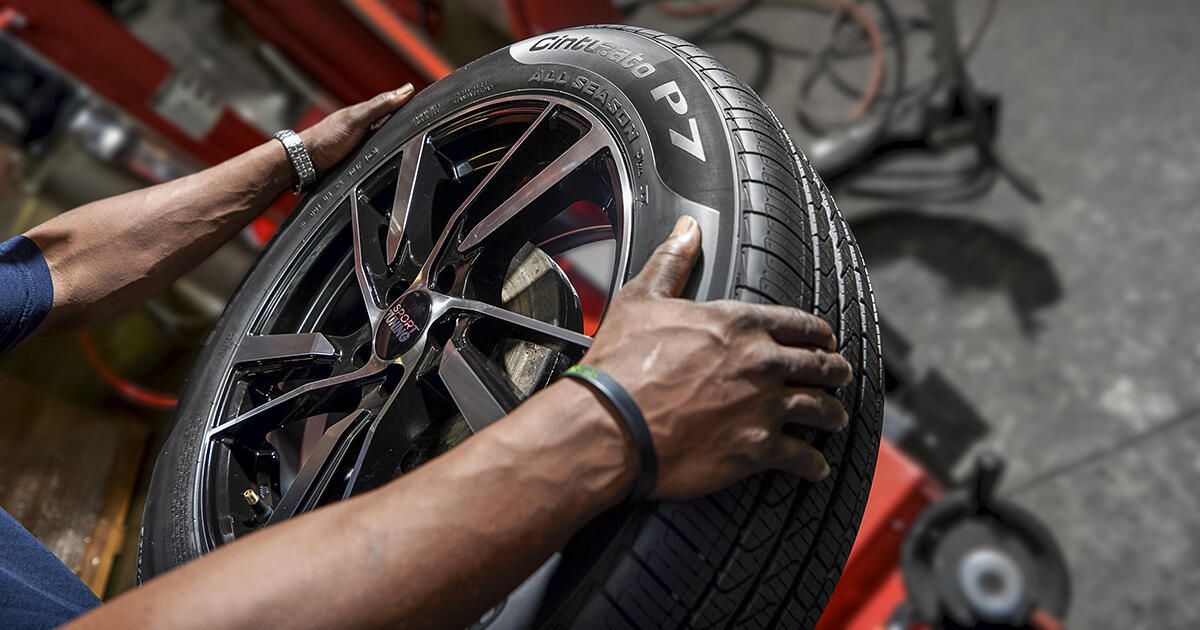 One of the easiest ways to find tires is online.
One of the easiest ways to find tires is online.
The drawback to this method is that you cannot inspect the tire before buying.
Luckily, many sites give you specifications and other information on particular tire types to help you make a more informed buying decision.
Another drawback to shopping for tires online is that once you receive them, you either have to install them yourself or pay someone to do it for you.
Some websites that sell all season tires include Goodyear Tires, 1010tires.com, and Amazon.com.
Option 2: Buy all season tires from local retailers. Another option is to purchase your all season tires from a retailer in your area.
The advantage of using a local retailer is that once you buy them, you can get the retailer to install them for you.
When making a purchase, keep in mind that you will need to buy additional rims if you plan on buying an extra set of all season tires.
Choosing a set of all season tires to install on your vehicle is quick and easy if you know what to look for.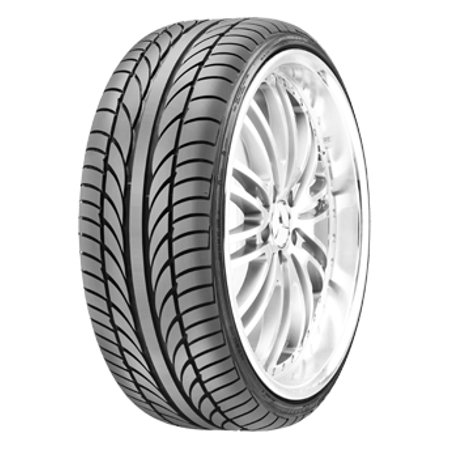 Keep in mind that all season tires are great if you expect to frequently encounter wet to dry conditions. These tires can also function well in light snow, but they don't do as well in extreme cold.
Keep in mind that all season tires are great if you expect to frequently encounter wet to dry conditions. These tires can also function well in light snow, but they don't do as well in extreme cold.
If you need to discuss what type of tires are right for your vehicle, consult one of the certified mechanics at YourMechanic to find out more information.
weather
Tires
The statements expressed above are only for informational purposes and should be independently verified. Please see our terms of service for more details
4.2 Average Rating
Service Hours
7 AM - 9 PM
7 days a week
Phone Number
1 (855) 347-2779
Phone Hours
Mon - Fri / 6 AM - 5 PM PST
Sat - Sun / 7 AM - 4 PM PST
Address
We come to you at no extra charge
Guarantee
12-month/12,000-mile warranty
Our certified mobile mechanics perform over 600 services, including diagnostics, brakes, oil changes, scheduled mileage maintenances, and will come to you with all necessary parts and tools.
Get a fair & transparent quote instantly before booking.
Earn up to
$70/hr
Apply Now
Our certified mobile mechanics make house calls in over 2,000 U.S. cities. Fast, free online quotes for your car repair.
GET A QUOTE
GET A QUOTE
How to Drive in Fog Safely
Driving Driving in fog is one of the most dangerous situations in which drivers can find themselves, because fog greatly interferes with visibility. When possible, drivers should opt against driving in such conditions and wait for the fog to lift....
What Does the Frost Warning Light Mean?
The frost warning indicator alerts you when you're at risk of driving in freezing weather and ice is present, when it can be dangerous to drive.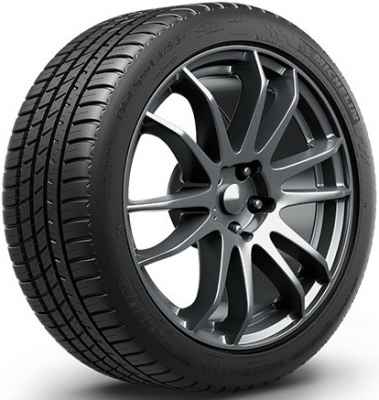
Top 10 Bad Car Symptoms You Should Never Ignore
Ignoring car problems costs more than fixing them right away. Never ignore if your car has rough shifting, a shaky steering wheel, or is smoking.
Cupping on rear tires
Abnormal wear and cupping of tires can come from a misalignment of suspension components or even failed suspension components. Leaking/failed rear shock absorbers are a common item for your year model. Have a trained mechanic, like the ones here at...
Clunking noise that chages relative to changes in speed
Noises are best diagnosed firsthand, however, I can provide some guesses in regard to your noise. The first thing that comes to mind is a failed CV axle (https://www.yourmechanic.com/article/how-long-does-an-axle-cv-shaft-assembly-last), which will often make a clunking noise upon acceleration. A worn...
Suspension is "loose"
The term "suspension is loose" is most likely the mechanics way of saying that you have worn components in the front end that would cause the alignment to not be able to be set to specifications. He might of seen...
He might of seen...
Cities
Services
Estimates
Our service team is available 7 days a week, Monday - Friday from 6 AM to 5 PM PST, Saturday - Sunday 7 AM - 4 PM PST.
1 (855) 347-2779 · [email protected]
Read FAQ
GET A QUOTE
Our car experts choose every product we feature. We may earn money from the links on this page.
Getty Images
Buying new tires can be a daunting experience. You face a bewildering array of brands, sizes and tire types to choose from, so it's easy to be confused. But don't worry: this guide will provide you with the essential facts you need to in order to make the right tire choice for your vehicle at the price you want to pay.
Before you buy, you'll need to know the answers to the following questions:
Already know about tires and just want our top picks? Our favorites in each category are listed below. Further down, you'll find more information about all-season, summer, and winter tires plus our top alternative picks in each category.
Further down, you'll find more information about all-season, summer, and winter tires plus our top alternative picks in each category.
Best All-Season Tire
$127 at tirerack.com
Best Summer Tire
$241 at Tire Rack
Best Winter Tire
$104 at discounttire.com
Is our top pick unavailable in the size you need? Looking for a fast, easy way to sort through the dozens of alternatives? Then go to Tire Rack's Tire Decision Guide. The company says it'll have a list of appropriate alternative choices for you in two minutes or less. The tirerack.com site is also deep with important consumer data, including tire warranties, treadwear guarantees, and tire-test results.
$150 at Tire Rack
$138 at tirerack. com
com
$235 at Tire Rack
The vast majority of vehicles today come with all-season tires, which are designed to provide acceptable all-around capability throughout the year and in all weather conditions. That means a reasonable ride and respectable handling, quiet running, good wet-weather grip, and some capability in snow. Given their all-season designation, most car owners leave them on in winter and expect that their tires will deliver all the traction they need on snowy, icy roads. But most all-season tires are marginal in snow; dedicated winter tires, also known as snow tires, provide far better traction when the snow falls.
There are now two main sub-categories of all-season tires: high-performance all-seasons and grand touring all-seasons. High-performance all-season tires provide sharper handling than "standard" all-season tires. They grip the road more confidently and feel more sporty to drive—usually at the expense of some winter-weather traction.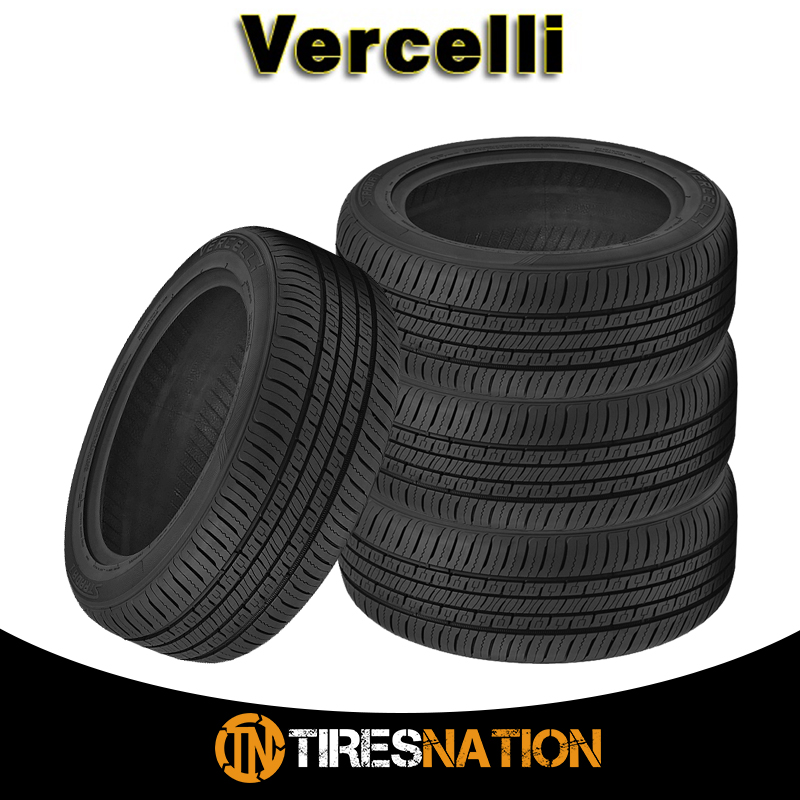 These tires are intended for sportier cars and more-aggressive drivers. Grand touring all-season tires have the lower-profile look of high-performance all-season tires but ride better at the price of some handling ability.
These tires are intended for sportier cars and more-aggressive drivers. Grand touring all-season tires have the lower-profile look of high-performance all-season tires but ride better at the price of some handling ability.
Recently, a subset of grand touring all-season tires has emerged that we call “all-weather” tires. These tires feature snow traction that almost comparable to that of pure winter tires while offering similar performance in other areas as conventional all-season tires. They are designated by a snowflake-within-a-mountain symbol on the tire's sidewall.
Summer Tires$160 at Tire Rack
$195 at Tire Rack
$211 at Tire Rack
This term is a misnomer, as this type of tire should rightly be called "three-season" rubber.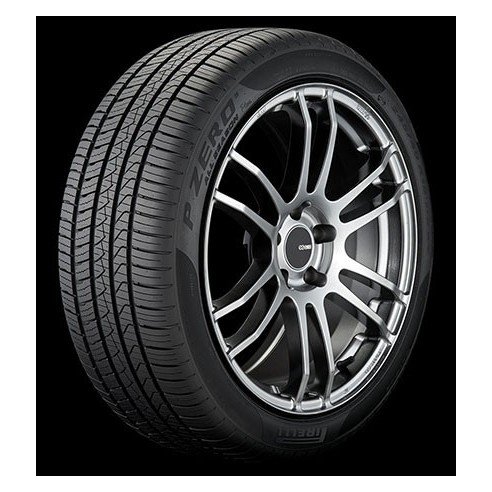 Summer tires are designed specifically to deliver dry- and wet-weather traction in moderate or warm weather. They sharpen steering response, increase cornering traction by an order of magnitude, and stop your vehicle in much less distance. But they do so at a cost: most summer tires only work well at temperatures of about 40 degrees Fahrenheit and above. As outside temps fall toward freezing, the tires can feel skittish and behave inconsistently; they lose a large portion of their grip to the point that they act like they are on a wet or even icy road. More than one driver of a powerful car, unaware of the temperature sensitivity of its summer tires, has lost control and crashed on a cold day.
Summer tires are designed specifically to deliver dry- and wet-weather traction in moderate or warm weather. They sharpen steering response, increase cornering traction by an order of magnitude, and stop your vehicle in much less distance. But they do so at a cost: most summer tires only work well at temperatures of about 40 degrees Fahrenheit and above. As outside temps fall toward freezing, the tires can feel skittish and behave inconsistently; they lose a large portion of their grip to the point that they act like they are on a wet or even icy road. More than one driver of a powerful car, unaware of the temperature sensitivity of its summer tires, has lost control and crashed on a cold day.
As with all-season tires, summer rubber comes in several varieties. Tire Rack divides these tires into three main groups by escalating capability: ultra-high performance on the bottom rung, followed max performance and extreme performance. Summer tires come on cars such as Porsches, Corvettes, Mercedes-AMGs, and Mustangs.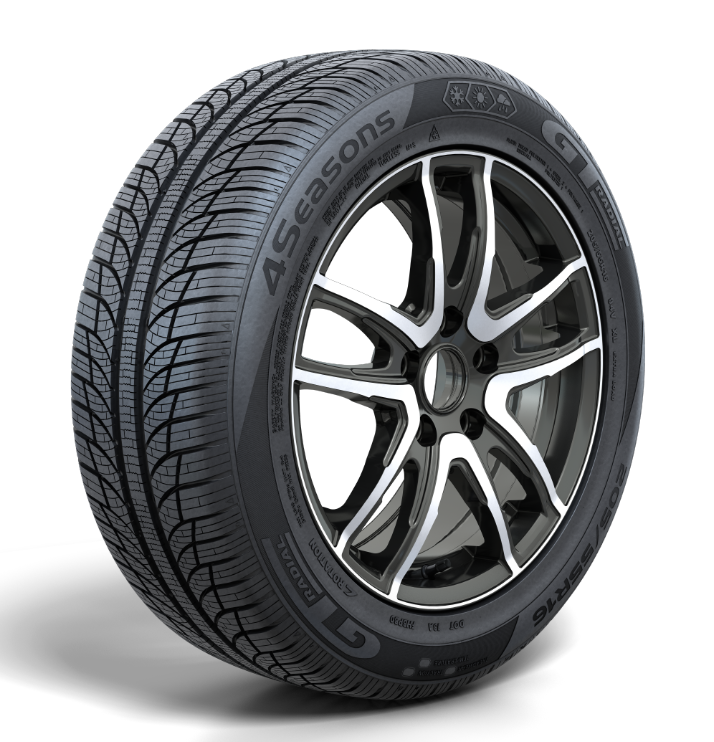
$166 at Tire Rack
$180 at Tire Rack
$270 at Tire Rack
Called "snow tires" in the past, winter tires are designed to provide maximum traction in snow and in slippery winter conditions—and the traction they provide in those situations is not matched by any other category of tire. Even an all-wheel-drive vehicle on all-season tires cannot match the stopping or turning capability of a similar two-wheel drive vehicle fitted with four winter tires, a point we have proven in our own winter-tire testing.
Winter tires are designed to work well in the cold-weather months, but they don't handle or wear as well as all-season or summer tires once the weather warms up. They should be considered as a second set of tires for your vehicle if you live where snow flies annually.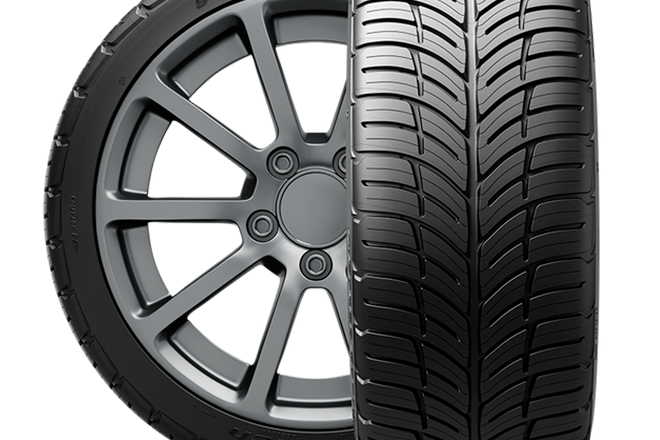 We fit all of our long-term test vehicles with winter tires and they've proven their worth many times over.
We fit all of our long-term test vehicles with winter tires and they've proven their worth many times over.
Why use winter tires? If you live in the northern states, we recommend purchasing a set of winter tires. Their deep treads are engineered to deliver a significant traction improvement, and do they ever work. You'll feel safer and be safer, not to mention more relaxed when driving in snow. Retailers such as Tire Rack will sell you a set of snows mounted on steel wheels that you can swap on when winter rolls around. Here at Car and Driver, we swear by them.
Tire Size and Other Factors
Most consumers choose to replace the worn tires on their vehicle with something equivalent in size and capability. This makes a lot of sense; your car was engineered to work well on the type and size of tires it came on, so fitting an identical or similar replacement set would maintain the performance and safety your vehicle was designed to deliver. (We'll get to upgrading later on).
(We'll get to upgrading later on).
To inform your decision process, you'll need to know your vehicle's tire size and speed rating, and you'll also want to consider how many miles you'll get out of any new tires you are considering (this is called tread wear). Much of that information is printed on the sidewalls of the tires that are on your car right now. It's also available in most owner's manuals, online, and at tire dealers. (We suggest cross-checking those sources to make sure you've got the right information.)
Here's how to read the most important data imprinted on your tires' sidewalls. (For an in-depth look at how to read all of the information on a tire sidewall, click here.)
KEY: 1) Tire width; 2) Aspect ratio; 3) Radial-tire designation; 4) diameter; 5) Load rating with speed rating; 6) Heaviest spot on tire; 7) Tread-wear rating; 8-9) Traction and temperature ratings; 10-11) Mud-and-snow or three-peak-mountain rating; 12) Vehicle-specific marking; 13) Tire-materials list and manufacturing information
Tire SizeIf you're going to replace your tires with something equivalent, you will need to know the proper size. The size of car and light truck tires is usually expressed in a short series of numbers and letters that read like this (as seen in the above illustration): 245/40-R18. The first number indicates the width of the tire at its widest point in millimeters. The number after the slash is what's called the aspect ratio, which indicates how tall the sidewall is as a percentage of the width. The higher the number, the taller the sidewall. The squat tires fitted to sports cars and muscle cars, called low-profile tires, have aspect ratios of 30–40. Family sedans and SUVs are in the 45-60 range or taller. The final number in the series is the diameter of the wheel in inches that the tire must mount to. The "R" indicates it's a radial tire, which virtually all of today's tires are.
The size of car and light truck tires is usually expressed in a short series of numbers and letters that read like this (as seen in the above illustration): 245/40-R18. The first number indicates the width of the tire at its widest point in millimeters. The number after the slash is what's called the aspect ratio, which indicates how tall the sidewall is as a percentage of the width. The higher the number, the taller the sidewall. The squat tires fitted to sports cars and muscle cars, called low-profile tires, have aspect ratios of 30–40. Family sedans and SUVs are in the 45-60 range or taller. The final number in the series is the diameter of the wheel in inches that the tire must mount to. The "R" indicates it's a radial tire, which virtually all of today's tires are.
Tires also carry a speed rating, which indicates not only how fast they can safely go for an extended period of time, but also the overall performance potential of the tires.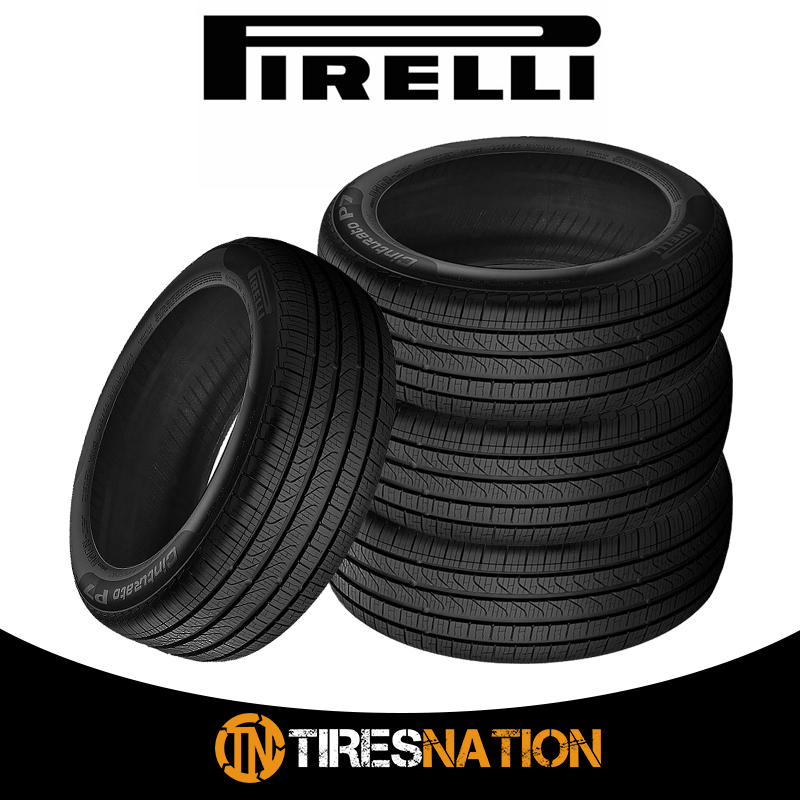 Tires for high-performance cars have a higher speed rating than those for mainstream family sedans and SUVs. The speed rating of the original tires that came on your car were matched to the maximum speed the car could attain—plus a significant built-in safety margin. This speed rating is expressed as a letter in the alpha-numeric code that immediately follows the tire size. Letters range from L to Y, and cover maximum speed ranges from 75 mph to more than 186 mph.
Tires for high-performance cars have a higher speed rating than those for mainstream family sedans and SUVs. The speed rating of the original tires that came on your car were matched to the maximum speed the car could attain—plus a significant built-in safety margin. This speed rating is expressed as a letter in the alpha-numeric code that immediately follows the tire size. Letters range from L to Y, and cover maximum speed ranges from 75 mph to more than 186 mph.
The are two pieces of data that will help you estimate how many miles you can expect from a set of tires: the tread-wear rating and the tire mileage warranty. The tread wear rating is listed as a number on the tire sidewall after the word "treadwear". The higher this number, the more likely the tire will last longer. But the tests that are used to determine treadwear aren't precise, so there is a lot of variability in this number.
A better way to gauge potential tire life, and to compare the expected longevity of different tires you might be considering, is to look at the manufacturers' tread-life warranties.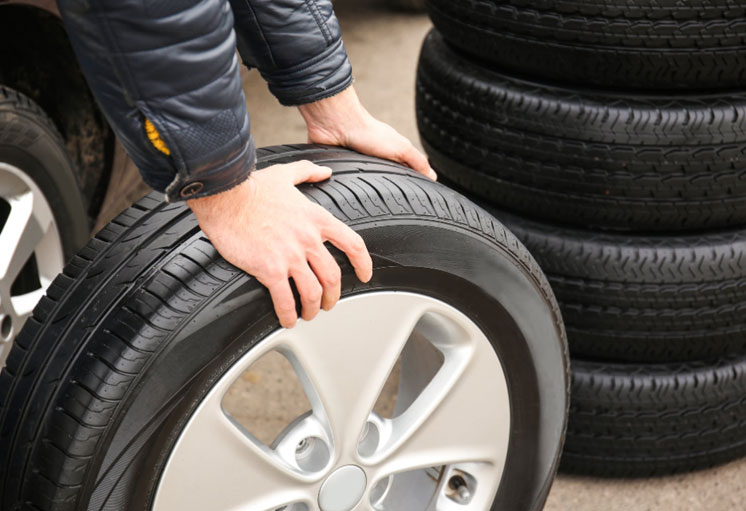 Many but not all tires carry a tread-life warranty in addition to manufacturing-quality/defect warranties. This information can be found online (like this example from tirerack.com), or in the tire maker's marketing materials. The industry's general rule is that about three-quarters of all drivers will find that their tires last at least last as long as the mileage listed in the tread life warranty. Generally, if your tires wear out before the guaranteed mileage bogey, you can get a credit for the percentage of miles you came up short, which you can then apply to the purchase of a new tire. (Tire dealers routinely handle this transaction.)
Many but not all tires carry a tread-life warranty in addition to manufacturing-quality/defect warranties. This information can be found online (like this example from tirerack.com), or in the tire maker's marketing materials. The industry's general rule is that about three-quarters of all drivers will find that their tires last at least last as long as the mileage listed in the tread life warranty. Generally, if your tires wear out before the guaranteed mileage bogey, you can get a credit for the percentage of miles you came up short, which you can then apply to the purchase of a new tire. (Tire dealers routinely handle this transaction.)
Numerous automakers fit their cars with run-flat tires from the factory. These tires are capable of driving for short distances at low speeds even after a puncture has left them without air, allowing you to reach home or a repair facility without needing to change a flat on the side of the road.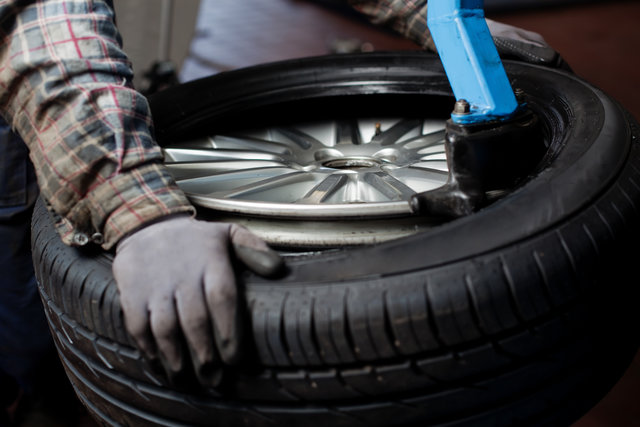 If your vehicle came on run-flats you have the option of replacing them with conventional tires and carrying a spare (but beware that some cars fitted with run-flats actually do not have a trunk compartment for a spare). Or, you can replace your worn run-flats with another set of run-flats. And now that tire-pressure monitoring systems are compulsory equipment in new cars, you could even fit run-flats on a car that didn’t originally come with them.
If your vehicle came on run-flats you have the option of replacing them with conventional tires and carrying a spare (but beware that some cars fitted with run-flats actually do not have a trunk compartment for a spare). Or, you can replace your worn run-flats with another set of run-flats. And now that tire-pressure monitoring systems are compulsory equipment in new cars, you could even fit run-flats on a car that didn’t originally come with them.
Run-flat tires do have downsides. Their stiff sidewalls, which are required to hold the tire up when deflated, tend to make the car ride noticeably harder over rough pavement, but tire tech is continually improving and run-flats aren’t nearly the penalty they were a decade ago. Choice is also more limited than with conventional tires and run-flats are premium-priced. In general, we'd recommend swapping to conventional tires and carrying a spare or mini-spare if possible.
In general, we'd recommend swapping to conventional tires and carrying a spare or mini-spare if possible.
There's one more decision you need to make: do you simply replace the tires on your vehicle with something equivalent, or upgrade?
If you're going to replace what came on the car with something equivalent, you're ready to go. Peruse the online resources like Tire Rack to compare tires, and then either buy from one of them or head to a local tire store. The advantage of buying online is that you can get the exact tires you want; different brick-and-mortar tire stores sell different brands of tires. The online retailers have relationships with the chain tire stores, which will mount the tires you bought on the internet on your wheels (for a small fee) even though you didn't buy them there.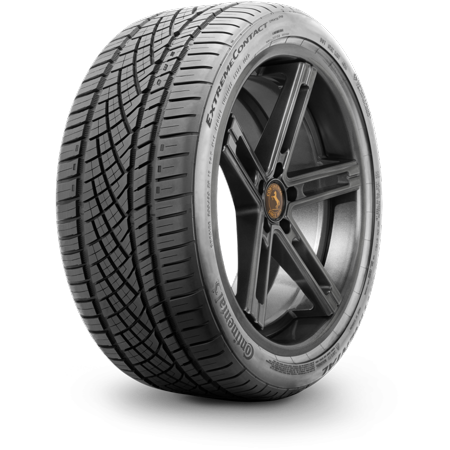 Tire Rack has a decision guide to help you find the tires that fit your car.
Tire Rack has a decision guide to help you find the tires that fit your car.
This is more complicated than simply replacing your tires, as you have several ways to go. You can choose a higher-performance tire of the same size on your current set of wheels by substituting, say, a high-performance all-season tire for a standard all-season—if you can find one that fits exactly. Or you can choose a set of wider, lower-profile summer or high-performance all-season tires, but this is trickier. You need to know if the tires will fit without rubbing on the suspension or body parts—a definite safety issue. Here, consulting one of the experts at Tire Rack is a must, as they have this information for many cars. You can also try checking an online forum for your make and model of car (if one exists).
Many vehicles can be had from the factory with several different tire sizes—Honda Civics, for example, come with tires ranging from 215/55-R16 to 245/30ZR-20—so going to a larger-diameter wheel might work.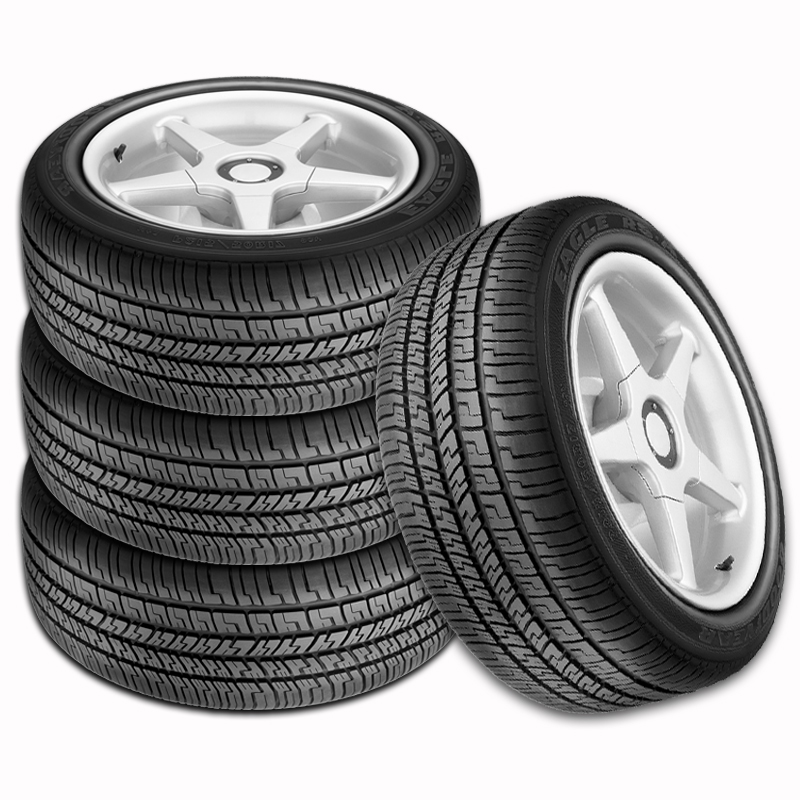 But know that fitting lower-profile rubber will almost always require a larger-diameter wheel. The outside diameter of your tires needs to remain constant; everything from your vehicle's suspension to its ground clearance to its gearing is affected by the overall size of the tires. As the sidewall gets slimmer, the wheel must grow to compensate. Use this size guide to see how switching to a lower-profile tire affects wheel diameter.
But know that fitting lower-profile rubber will almost always require a larger-diameter wheel. The outside diameter of your tires needs to remain constant; everything from your vehicle's suspension to its ground clearance to its gearing is affected by the overall size of the tires. As the sidewall gets slimmer, the wheel must grow to compensate. Use this size guide to see how switching to a lower-profile tire affects wheel diameter.
Wider, lower-profile higher-performance tires can also make the car ride rougher, wear faster, be noisier, and influence the steering, possibly causing you to have to make more steering corrections on the Interstate. Low-profile tires will also probably be more prone to damage from potholes, something we experienced with one of our long-term cars, which blew out a dozen of its low-profile tires in the course of 40,000 miles on our rutted Michigan roads. And they'll almost definitely be more expensive, plus you'll have to buy a new set of wheels.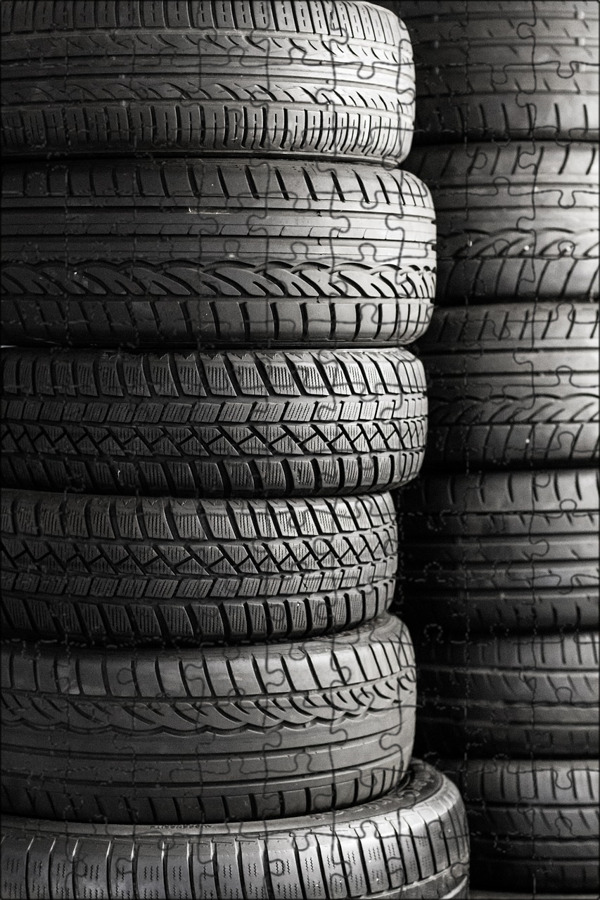 You'll need to consider all of these issues carefully before you make the leap.
You'll need to consider all of these issues carefully before you make the leap.
For everything you need to know about buying and maintaining tires, click here.
This content is imported from OpenWeb. You may be able to find the same content in another format, or you may be able to find more information, at their web site.
Discussing the features of choosing all-weather tires for cars. Pros and cons of all-season tires and useful tips.
All season tires for SUVs and passenger cars are a compromise between summer and winter tires. It has only a fraction of the characteristics of seasonal tires, so it can maintain more or less stable handling all year round. What tires are better for Moscow, and is it worth giving preference to all-weather tires at all? Let's see how professionals choose tires.
The focus of the all-season is the asymmetric tread, the inner side of which is designed for driving on snow, and the outer side is designed to drain water and better grip in the rain.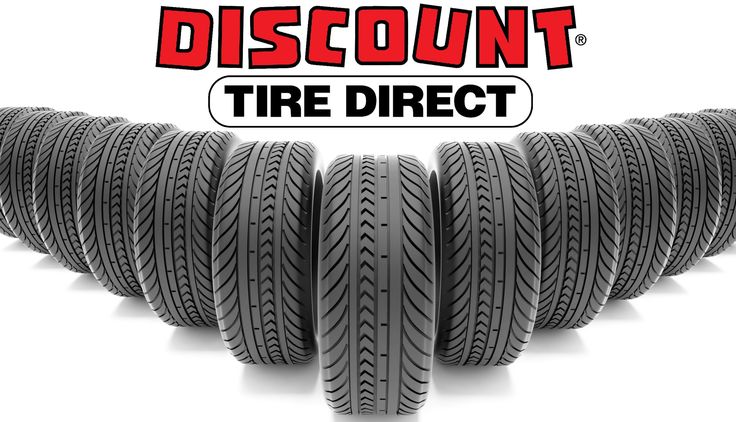 Equally important is the composition of the rubber, if hard rubber in summer will provide the best grip and less wear, and soft in winter will allow you to safely overcome snowy and icy tracks, then an all-weather with medium hardness will allow you to cope with both types of tracks with half success.
Equally important is the composition of the rubber, if hard rubber in summer will provide the best grip and less wear, and soft in winter will allow you to safely overcome snowy and icy tracks, then an all-weather with medium hardness will allow you to cope with both types of tracks with half success.
Asymmetric tires for jeep and passenger cars look like this:
The composition of the rubber is chosen so that it does not get too hard in winter and does not float too much in summer. At the same time, it is stiff enough to wear slowly on a dry summer track and soft enough to feel relatively safe in the snow. However, at low temperatures, there is an increase in braking distance and a decrease in traction.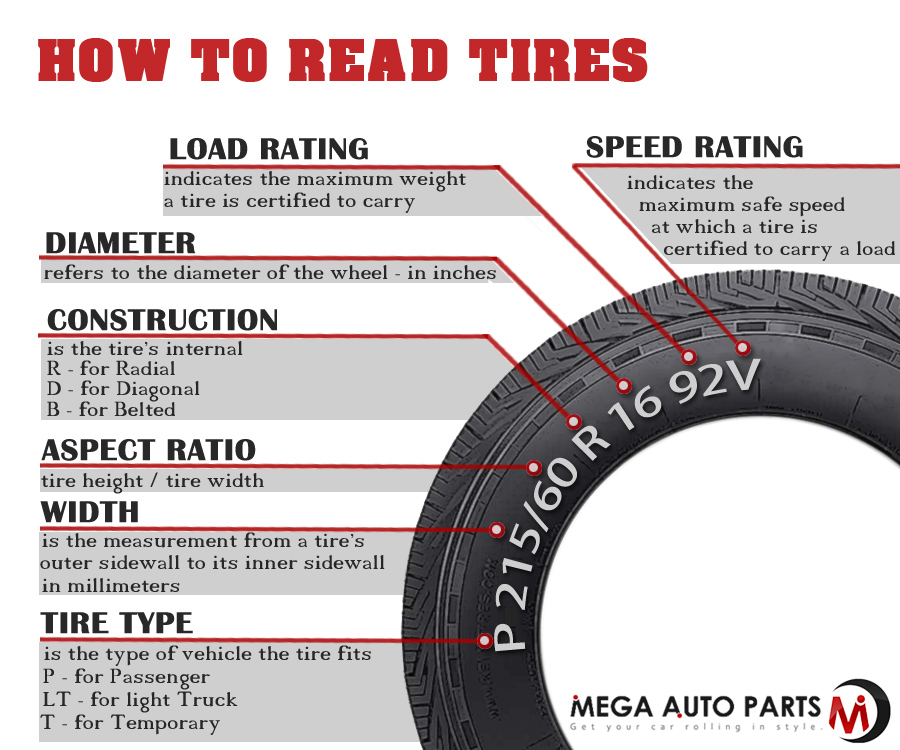
It is easy to navigate through the markings in the assortment of the store - you should choose tires by looking at the inscriptions and drawings on the side edge of the wheel. Tire manufacturers use several marking options: All Seasons (AS), Any Weather (AW), M&S, M+S. In the case of "M&S" and "M + S", clarification is necessary, since some manufacturers use this abbreviation to refer to summer tires (despite the decoding: Mud (M) - "mud", Snow (S) - "snow".).
Autotests for major automotive publications annually confirm not the most pleasant fact - the better the tires, the more expensive they are. However, in a comparison of all-season, winter Velcro and studded tires, winter always wins. All-season shoes demonstrate the following indicators:
In addition, these tires have a number of disadvantages:

All season Drive protection
Rating:
5
Tires Goodyear Vector 4Seasons Gen-3 SUV
Summer Drive Protection Sound Comfort
Tires Goodyear Eagle F1 Asymmetric SUV AT
All season Drive protection
Rating:
4.5
Tires Goodyear Vector 4Seasons
All season
Rating:
4.5
Tires Goodyear Vector 4Seasons Cargo
Summer All season Drive protection
Tires Goodyear Wrangler All Terrain Adventure
All season Drive protection
Rating:
4. 5
5
Tires Goodyear Vector 4Seasons SUV Gen-2
When is it worth buying such tires? The choice of all-season tires is determined in the following cases:
All-season shoes, you won't have to stand in line in the service during the off-season and spend 2 times more money on 2 sets of tires. In addition, in a mild climate in winter, such “shoes” behave much better than “specialists” in harsh winters and spoil the road surface less.
Is it possible to use the all season in Moscow? In this region, it is recommended for summer, autumn and spring, rather than for winter. During snowfalls in Moscow, when the road is covered with a thick layer of snow and ice, it is advisable to change into more serious models.
Which all-season tires to choose? To evaluate which all-season tire is better, you need to pay attention to the tread pattern, tire shape and rubber compound. Equally important are such characteristics as aquaplaning, the ability of rubber to maintain properties at low and high temperatures, road grip, and reduced braking distances.
What is the best all-season tire for an SUV? Consider the main evaluation categories:
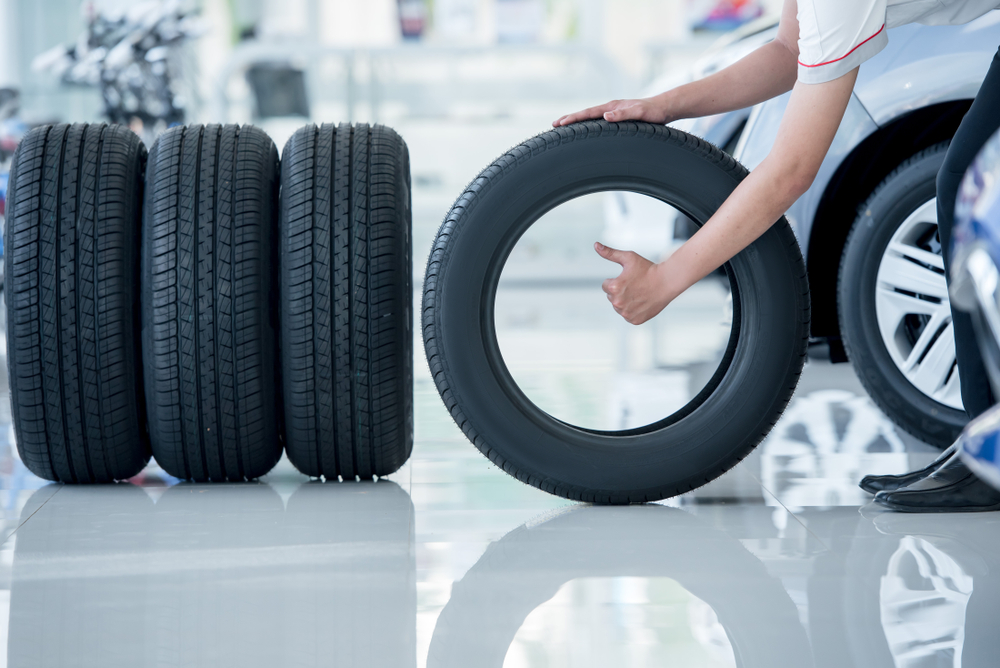
In addition, we should not forget about the types of rubber depending on the operating conditions:
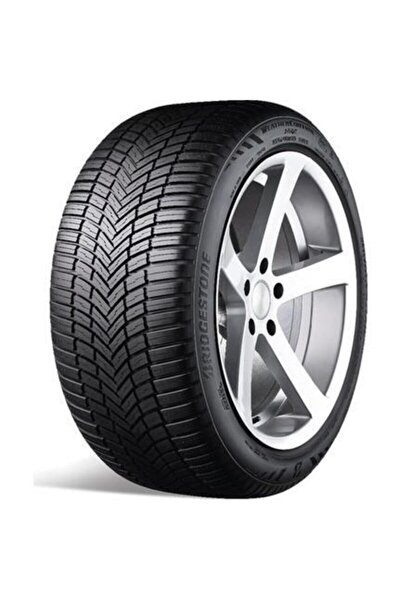
Each manufacturer is good in one way or another or in several directions, it is impossible to single out one ideal tire model. What to wear to your passenger car or SUV is decided based on the conditions in which you plan to use the tires: the ratio of rainy, snowy dry days a year, the intensity of snowfall, the rate of temperature changes and temperature extremes. When choosing all-season shoes in Moscow, it is recommended to opt for more expensive and serious models due to changeable and harsh weather conditions.
Every motorist must have come across a similar situation: late autumn, the air temperature for the first time became negative, the road was covered with ice, and summer tires were still installed on the car. All-season tires can easily cope with this problem. This is a compromise option, since such tires have optimal parameters for any season. But choosing them as permanent, you need to pay attention to some important points.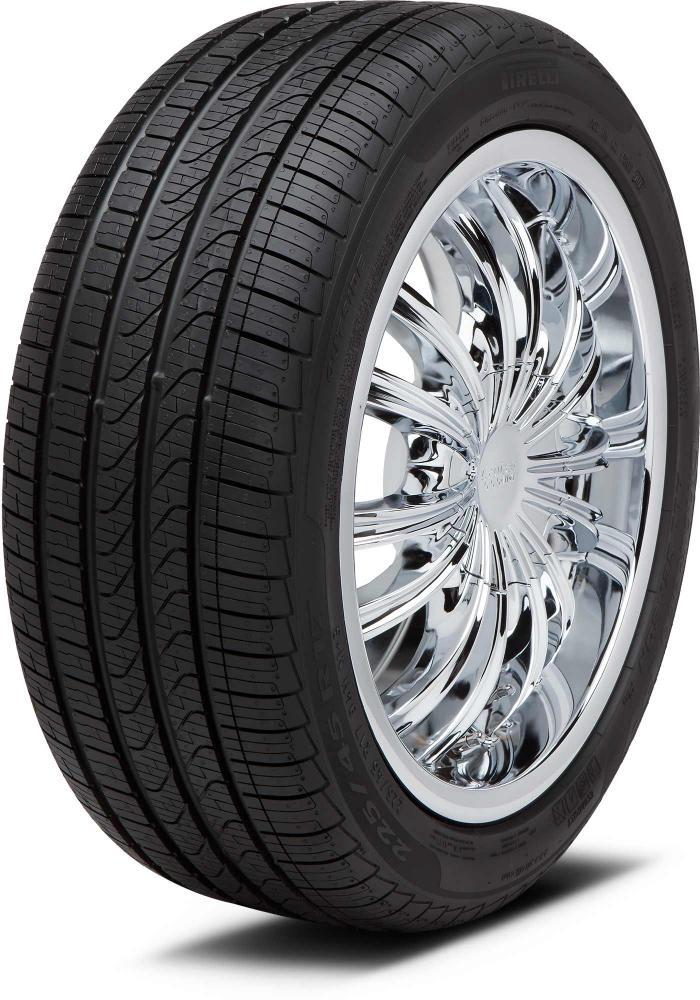
Like any other, universal rubber for winter and summer has different tread patterns:
The question needs to be answered according to the following criteria:
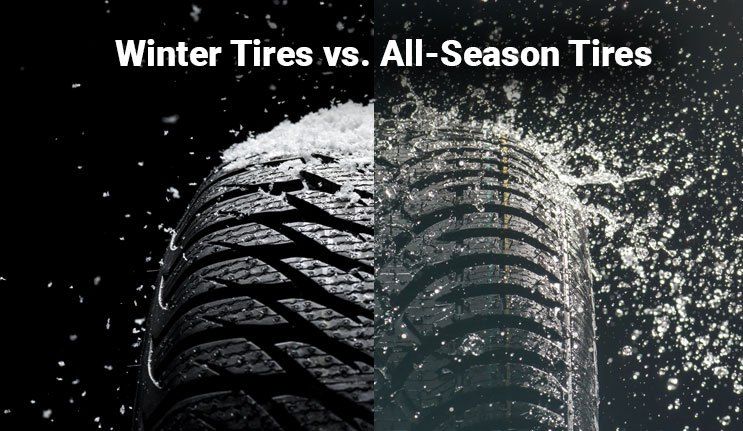
It is better to buy all-weather tires for those drivers who live in regions with a moderate temperature difference. Serious frosts are not recorded here, and the road surface, as a rule, is relatively intact. When the temperature drops to -7 °, it becomes unsafe to operate all-seasons. But for short trips around the city, this model is quite acceptable. In this case, the wheels will last a long time while maintaining the original qualities. In addition, the ride will be safe and comfortable.
As for power, experts do not recommend installing such tires on a car with parameters of more than 120 horsepower. The vehicle behaves unsteadily, which may lead to an accident.
When choosing in favor of the tires in question, it is important to remember that they are not an ideal solution, but only used for driving under suitable weather and other conditions. Before buying, you should read reviews about tires, and then you can consult with specialists from the Wheels Darom online store.